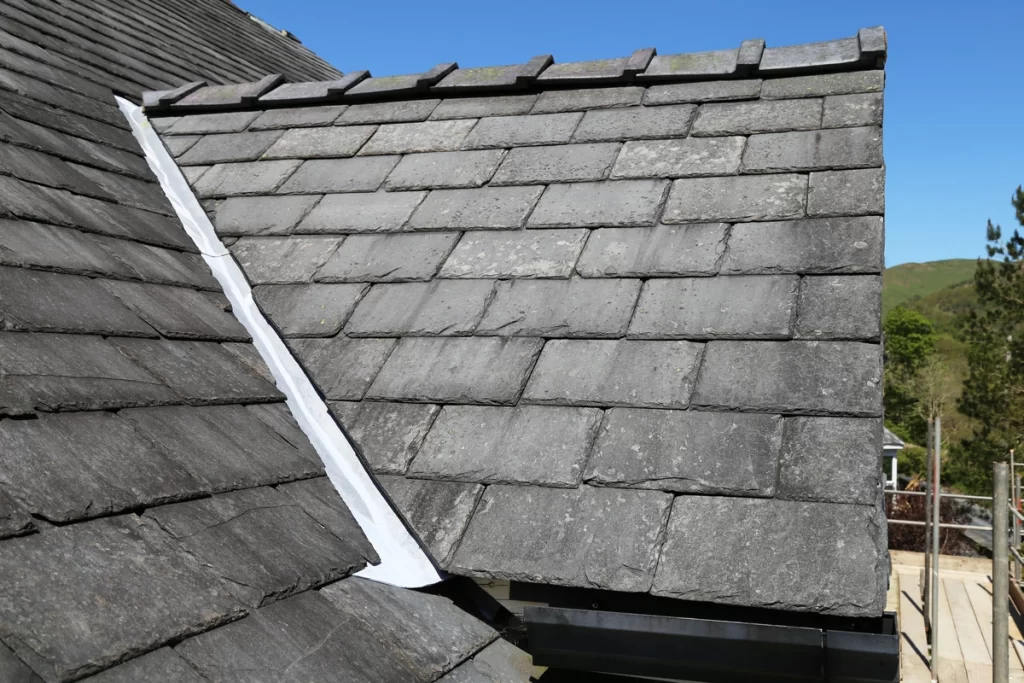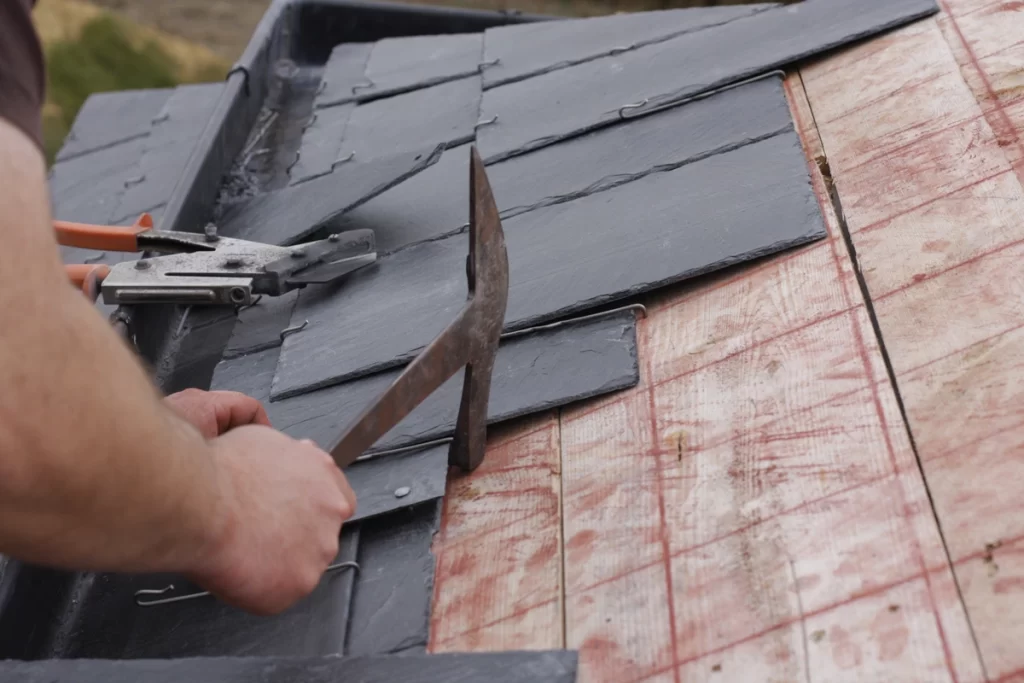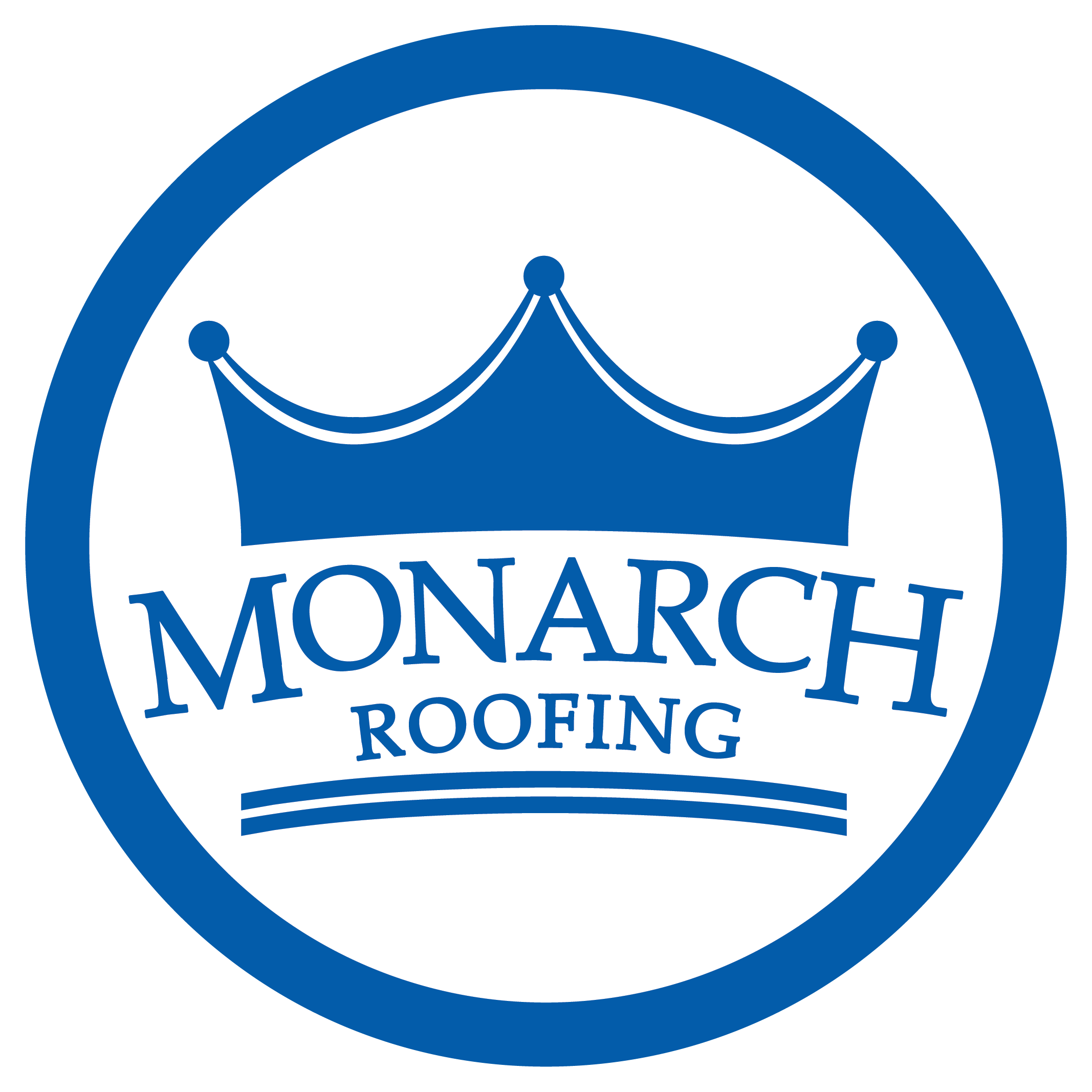If you’re a homeowner contemplating a new roof, you’ve likely come across various materials—from asphalt shingles and metal to tiles and wood. However, one material that stands out for its longevity and aesthetic appeal is slate.
Renowned for its durability and timeless beauty, slate roofing has been a favored choice for centuries. But how long does a slate roof last? In this guide, written by your local slate roofing experts, we’ll go over:
- The lifespan of slate roofs
- The factors that influence their longevity
- Why they might be the perfect choice for your home
What is a Slate Roof?

Slate is a fine-grained, metamorphic rock derived from an original shale-type sedimentary rock composed of clay or volcanic ash. It’s known for its ability to be split into thin slabs, making it an ideal material for roofing. The natural beauty and unique texture of slate add a touch of elegance to any home.
Types of Slate Roofing
There are two main types of slate used in roofing:
- Natural Slate: Extracted directly from quarries, natural slate offers unparalleled durability and aesthetics. Each piece is unique, contributing to a roof that is both functional and visually stunning.
- Synthetic Slate: Made from a combination of plastic and rubber, synthetic slate mimics the look of natural slate but is lighter and often less expensive. While not as durable as natural slate, it still offers a respectable lifespan and can be a more budget-friendly option.
The Longevity of Slate Roofs: 4 Key Factors

One of the primary reasons homeowners opt for slate roofing is its incredible lifespan. Traditional roofing materials like asphalt shingles typically last between 20 to 30 years. In contrast, a well-maintained slate roof can last anywhere from 75 to 200 years, depending on various factors, including:
⭐️ 1) Quality of Slate
- High-Quality Natural Slate: Premium-grade slate can last over 100 years, with some types enduring up to 200 years. Sourced from reputable quarries, high-quality slate is dense, durable, and less likely to absorb water.
- Lower-Quality Slate: Inferior slate may only last 50 to 75 years. More prone to flaking and breaking, lower-quality slate can compromise the overall longevity of the roof.
🔨 2) Installation
- Professional Installation: Proper installation by experienced professionals ensures that each slate tile is correctly placed and secured. Incorrect installation can lead to issues such as water infiltration, which can significantly reduce the lifespan of the roof.
- DIY Installation: While tempting to save on costs, DIY installation of a slate roof is not recommended. The intricacies involved in laying slate require specialized knowledge and skills that most homeowners lack.
👷♀️ 3) Maintenance
- Routine Inspections: Regular inspections help identify and address minor issues before they escalate. Look for cracked or broken tiles, as well as signs of water damage or moss growth.
- Timely Repairs: Promptly replacing damaged or missing tiles prevents further deterioration and extends the life of the roof. Hiring professionals for repairs ensures that the work is done correctly and safely.
🌏 4) Climate and Environment
- Weather Conditions: Slate roofs are highly resistant to extreme weather conditions, including heavy snow, ice, rain, and wind. However, constant freeze-thaw cycles can cause slate to crack over time.
- Environmental Factors: Proximity to saltwater or industrial areas can accelerate the aging process of slate due to exposure to corrosive elements.
Benefits of Slate Roofing
There are lots of reasons to opt for slate roofing, including:
Longevity
A slate roof is a long-term investment that can last for multiple generations, reducing the need for frequent replacements. The extended lifespan of slate roofs contributes to their overall cost-effectiveness.
Aesthetic Appeal
Slate’s natural beauty and unique texture add a touch of elegance and sophistication to any home. Available in a variety of colors and finishes, slate roofing allows for customization to match the architectural style of your home.
Durability
Slate is inherently resistant to fire, mold, and pests, making it a durable and low-maintenance roofing option. Its high density helps it withstand extreme weather conditions without deteriorating.
Eco-Friendly
Slate is a natural material that requires minimal processing, reducing its environmental impact. Its long lifespan means fewer replacements and less waste, contributing to sustainable building practices.
Comparing Slate to Other Roofing Materials
Is slate the roofing material for you? Compare it against these popular roofing materials to get a sense of what’s right for you:
Asphalt Shingles
- Lifespan: Typically lasts 20 to 30 years. Requires more frequent replacements compared to slate.
- Cost: Lower initial cost but higher long-term expenses due to replacements and maintenance.
Metal Roofing
- Lifespan: Can last 40 to 70 years, depending on the material. Less durable than high-quality slate.
- Aesthetics: Modern and sleek appearance but lacks the timeless beauty of slate.
Tile Roofing
- Lifespan: Can last 50 to 100 years. Comparable to lower-quality slate in terms of longevity.
- Weight: Heavier than many other roofing materials, requiring additional structural support.
Cost Considerations
There’s no away around it: slate roof installation can be expensive. Plan ahead for these cost considerations, to avoid expensive potions down the line.
Initial Investment
The initial cost of a slate roof is higher compared to other materials. However, the long lifespan of slate means fewer replacements and lower long-term costs.
Long-Term Savings
Minimal maintenance requirements and fewer replacements contribute to long-term savings. Investing in a high-quality slate roof can result in significant cost savings over the years.
Increased Property Value
A slate roof can increase the overall value of your property. Potential buyers are often willing to pay a premium for homes with durable and aesthetically pleasing roofing.
The Importance of Professional Installation

When it comes to a slate roof, it’s always better to rely on a professional roofer. Here’s why:
- Specialized Skills: Installing a slate roof requires specialized skills and knowledge. Professional installers ensure that each tile is properly placed and secured, preventing potential issues down the line.
- Working at Heights: Roofing work involves working at heights, which can be dangerous for inexperienced individuals. Professional installers are trained in safety protocols and have the necessary equipment to perform the job safely.
- Peace of Mind: Many professional roofing companies offer warranties on their workmanship. Hiring insured professionals protects you from liability in case of accidents or damage during installation.
Common Myths About Slate Roofing
Heard about slate roofing through the rumor mill? Here’s what’s true and what’s not.
Myth 1: Slate is Too Heavy
While slate is heavier than some other roofing materials, most modern homes can support its weight with minimal modifications. Consulting a structural engineer can provide peace of mind and ensure your home can handle the additional weight.
Myth 2: Slate is Too Expensive
While the initial cost is higher, the long lifespan and minimal maintenance requirements make slate a cost-effective option in the long run. Investing in a high-quality slate roof can result in significant savings over time.
Myth 3: Slate is Fragile
High-quality slate is incredibly durable and resistant to damage. Proper installation and regular maintenance ensure that your slate roof remains in excellent condition for decades.
Learn More About Slate Tiles
A slate roof is not just a roofing option; it’s a long-term investment in your home’s beauty, durability, and value. With a potential lifespan of up to 200 years, slate roofing offers unmatched longevity compared to other materials.
If you’re ready to invest in a slate roof, consult with a professional roofing contractor at Monarch Roofing to explore your options and start your journey toward a beautiful, durable, and eco-friendly roofing solution.





